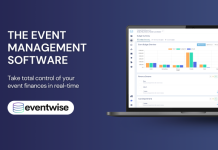Mark Laurie is the Director of NCASS and has been with the business for six years. On a day-to-day basis he advises caterers, event organisers and street food traders on all areas of running businesses and events legally and safely. He also sits on a number of government panels, including the Business Advisory Group for the Food Standards Agency. At present he is spearheading the development of the NCASS Connect programme – working with EHOs and event organisers to create a food hygiene passport for businesses across the UK. Mark is a massive foodie and has a personal interest in the sustainability at festivals and events. In this article, Mark considers a unique initiative that NCASS is part of, designed to reduce and redistribute the otherwise edible waste.
Food is an essential part of the modern festival experience; customers need to eat and event organisers need to raise revenue. Increasingly great food is appearing at festivals, drawing in new crowds and delighting old customers.
So how do you get the right mix of caterers? And what should you be asking for during the procurement process?
Understand your offering
Organisers often ask us how many caterers should be at an event to ensure that guests are fed promptly without over-catering the event. Unfortunately it’s not an exact science; lots depends on the type of event and the type of customers attending.
What kind of customers?
People of different demographics tend to eat different types of food and in different volumes. 5000 18 year old pie-eyed ravers might prefer something cheap to fill them up quickly (in which case a few high volume burger type vans could well be appropriate). Whereas 5000 middle-aged literary festivalgoers might prefer to see trucks specialising in seafood paella or something similar.
If you invite one of the paella-type traders to your event with the 18 year old ravers, and he ends up having to throw away thousands of pounds worth of perfectly good stock, your relationship will instantly be soured.
How long does the event go on for?
Events which have a captive audience and last for several days (like Glastonbury) can hire more caterers and charge higher fees than one day urban events, because guests buy food for convenience.
Is your event in a town centre? Are there fast food outlets or restaurants nearby? Your punters may well eat before or after they attend. That’s going to reduce the potential sales for caterers significantly. And if that’s the case, you should warn the traders to bring less food and ask for lower fees.
In a similar vein – if it rains and your event is a free one, punters are likely to stay at home and this increased risk for caterers should be reflected in a lower pitch fee.
Accurate punter numbers
Traders base their stock and staff numbers on attendance figures and the number of other caterers onsite. Providing incorrect attendance figures or caterer numbers could constitute a breach of contract or miss-selling on your part. It’s also likely to earn you a very bad reputation among caterers – and no news travels like bad news; caterers do talk to each other!
Equally, having a licence for 20,000 people is not the same as selling 20,000 tickets. Most shows don’t sell out, so tell traders your maximum capacity and your projected capacity.
High or low volume food?
It’s not a bad idea to get a feeling for the speed at which caterers can serve food. Some street food traders may only be able to sell 20 – 30 potions per hour at peak times due to their capacity. Whereas experienced event caterers may be able to sell several hundred portions in the same time.
A mix of high and low volume traders can work well at events, but get too many low volume caterers and your punters may be waiting for long period to get fed. Ask traders what kind of volumes they can do to give you a better idea or how much they can sell, and the appropriate level of pitch fee.
You should also try to factor in how many peak hours trading there will be. If the event finishes at 5 o’clock then people will most likely go home to eat. Equally, breakfast specialists are only likely to be busy during breakfast time. Consider the type of food people will be selling and what times that food is likely to be popular to determine how much trade they will get throughout the day.
Pitch fees, tenders or percentages?
Mobile caterers tend to work on a 10 – 20% of turnover going to rent, which is why it’s helpful to understand their potential output. If the rent is over 20% of their turnover, the caterers will struggle to turn a profit and are unlikely to return. That’s why turnover percentage is their preferred method – it means that you are sharing the risk with them. You’re also likely to do better than you would from a set pitch fee if the caterer has a great day of trading. It just requires some trust.
Pitch fees and tenders can also be used to charge caterers. If they don’t think it’s worth the fee, they won’t pay it. Tenders can be a great way to agree fees but only work with honest attendance figures and caterer numbers. Hiring experienced traders also lessens the likelihood of newer traders overpaying for the event and then trying to cause trouble for you.
Many events use a combination of the different approaches to spread the risk to trader and the organiser.
Festival organisers interested in finding out more should click here or call 0121 603 2524. The free caterer search for pre-vetted and approved caterers, as well as the online ‘Connect’ system is available on the NCASS website. They can also provide festivals with dedicated advice on working with traders.





